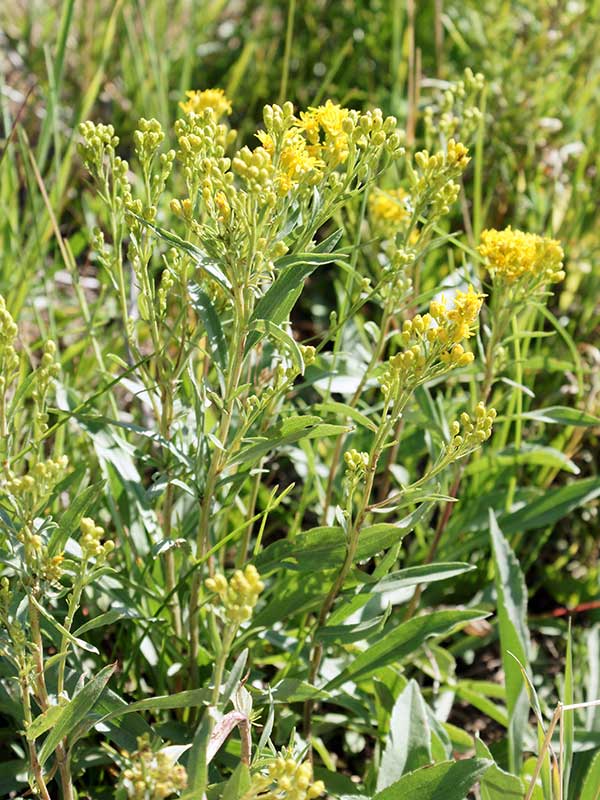Solidago missouriensis / Missouri goldenrod
- perennial herb, up to 40″ tall
- inflorescence is a branching panicle with many (≥200) yellow flower heads
- involucres are ¼ long with 3 or 4 layers of narrow, pointed, hairless, yellow-green bracts
- leaves are thin and lanceolate, upright and rigid with prominent midribs
- upper leaves have pronounced but small teeth
Also known as: prairie goldenrod
Missouri goldenrod is a perennial herb growing from an underground caudex, rhizomes, or both. Above ground, it may grow as tall as 40 inches; below ground, as deep as 7 feet by taproot.
The inflorescence is a branching panicle of many yellow flower heads at the top of the stem, sometimes with over 200 small heads. Each “flower” is small, ca. 1/8 inch across, with 5-14 yellow ray florets a few millimeters long surrounding 6-20 disc florets. Overall, the panicle may be 6 inches long and 4 inches across. The panicles themselves may be either pyramidal with arching branches, or more upright with more erect branches.
As with most members of the aster family, the structures surrounding the flower may be as important for identification as the floret color and numbers. In this case, surrounding the flower base are 3 or 4 layers of narrow, pointed, hairless, yellow-green bracts (phyllaries). These make up the involucre but are still less than ¼ inch long. The individual flower stalks are about the same length.
Missouri goldenrod leaves are rigid and alternate, and basal leaves can be up to 12 inches long. Up the stem, they are smaller. The midrib and two lateral veins are prominent. Basal and lower leaves are mostly without teeth, while the upper leaves have pronounced, but small teeth. Basal and lower leaves may wither away by flowering time.
Missouri goldenrod is found mostly in dry, open habitats, especially on disturbed soils. Such soils include those turned over by burrowing animals. It can occur at high elevations.
Interesting bits – During the Dust Bowl-era drought of the 1930s, when all else had died, this plant flourished. After the drought ended and the grasses returned, it became less common, even disappearing.
| Color | |
|---|---|
| Family | |
| Blossom size | |
| Inflorescence size | |
| Inflorescence type | |
| When? | |
| Where? |


